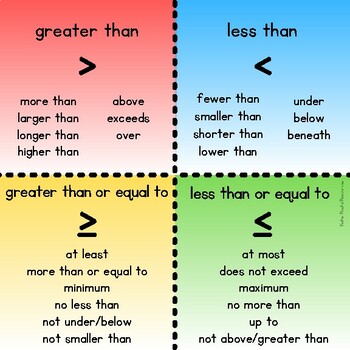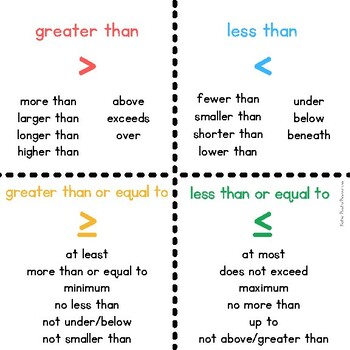Inequality Word Problem Key Words and Phrases Anchor Chart Word Map
- PDF
What educators are saying
Also included in
- Word problems can be tough! Many of my students struggle with breaking apart word problems with both basic operations as well as inequalities. With this, I made anchor charts that identify key words that are commonly seen in word problems. 1: Basic Operations-- Addition + | Subtraction - | MultiplicPrice $10.00Original Price $13.00Save $3.00
Description
Greater Than > | Less Than < | Greater Than or Equal To ≥ | Less Than or Equal To ≤
Sometimes it can be tricky to figure out exactly what a word problem is asking you to do. With this word map, students will be able to connect the words they are seeing in their math problem to the mathematical operation.
I created this tool in order to support my students who were getting caught up in the language of word problems. Being able to solve word problems helps students practice real-world problem solving, so providing students with key words can motivate them to be independent.
There are three versions of this chart included in the purchase:
1: full color
2: some color
3: no color
Please leave a review and I would love to see pictures of how this is being used with your students!





